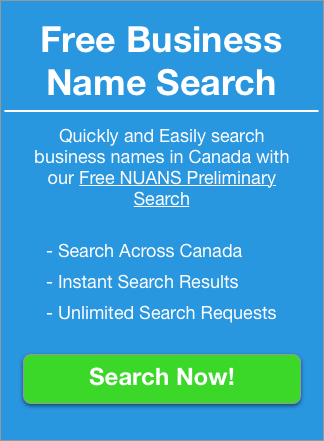How To Develop An Effective Startup Growth Strategy

Startups…
23% fail because they don’t have the right team.
29% fail because they run out of cash.
42% fail because the market did not need their service or product.
Every one of these issues is easily solved. In fact, every one of the top 20 reasons startups fail is easily solved with the right startup growth strategy.
Unfortunately, not all startups create an effective plan. Some don’t plan at all. You’re not one of those people, are you?
No.
You’re here because you know that for any sustainable business, a practical strategy is paramount. Well, you’ve come to the right place.
Ahead, you’ll find all the information necessary to build a flexible strategy that focuses on your startup’s growth. And grow it will. Especially when you implement the growth hacks we included below.
Pre-Plan
Ok, let’s begin by defining “startup growth strategy”. It’s a detailed road map of how you’re planning to get your business from zero to success. It details your goals, your timetables, and your strategies.
Most plans reach at least five years into the future. You’ve got to be prepared. You’re competing against all the other companies being created each year.
Your strategy will outline details for events happening today and this week. It’ll grow vague as you look deeper into the future.
For those events, you’ll strive for a ten-thousand-foot view. It’ll give your plan more flexibility.
You’ll have unexpected barriers, but the smart business owner builds room into his strategy to recover from such troubles.
Ok, so how do we actually build the plan?
To build your startup growth strategy, you need to know three things: (1) how to ensure you have a solid, sustainable product; (2) how to start growth hacking; (3) what steps you need to take to put pen to paper, and actually write your plan.
Pre-Launch Tactics
Before you launch your product, go through each of the following steps. They’ll set you and your product up for sustainable success.
If you’ve already launched your product, you’ll still need to go through the following steps. You’ll have to work backward in some steps. But you need the information you’ll acquire.
Product Research
In order to guarantee that all the work you put into your startup growth strategy is worth it, you need a product people are willing to buy. Remember that statistic at the beginning of this article?
43% fail because people didn’t want to buy their product.
That’s almost half!
Nearly half fail because consumers didn’t want their product! How do you ensure your company isn’t one of that 43%? The answer is fairly simple.
Research.
Research, research, and more research. You must understand what your target market needs, so you can provide it. Where can you do that research?
- Quora
- Yahoo Answers
- YouTube
- Email questionnaires
- Phone interviews
- Face-to-face inquiries
Exhaust every avenue until you know your audience inside and out.
As a beginner, mining data can be challenging. Distinguishing the relevant data from the irrelevant is difficult.
If you’re a beginner, mine it all. You’ll get the hang of things after you perform deep dives four or five times. Until then, you want everything.
The deeper you dive, the more you’ll begin to notice patterns. Your audience will share certain problems. They might say things like:
- I just wish my feet didn’t hurt at the end of the day
- My cat ends up with flees no matter which collar I use
- None of the car polishes are shiny enough
When you notice your audience repeatedly complaining about a problem, you know you’ve hit gold. Then it’s time for you to start creating a solution
If you’re one of the few who’s managed to do this step backward, you’ll still need to do the research. Why? Because you also need to understand the problem you’re solving for your audience.
Write down the problem using their words. Copy and paste their whole comments into a document which you save specifically for research. Use it later when you write your sales letters, emails, landing pages, websites, and value propositions.
Build in the Viral
So how do you take your product from zero to exponential growth? You build a viral component into it. The scope of this subject could easily fill a bookshelf or two.
Let’s pare it down to the nitty-gritty.
Remember all that research you did on your target audience? Well, one of the things you need to know is where they consume their information? Are they Twitter fans? Do they only read case studies and white papers?
The first way to build in viral-ness: give it a reason to land in front of your audience. For that, you must first know where your audience is located. Which is why you did all that research, remember?
If your audience spends all their time on Pinterest, create a product that looks photogenic and sharable.
If they spend all their time on YouTube, create a product that you know a few YouTube celebs would love. Then send them some freebies. See if they’d be willing to keep it with them on their next shoot.
You get the idea.
The second strategy is easier to explain but harder to implement. Build something your audience is going to recommend.
Make something they’ll go bananas for. Something they’ll tell everyone about.
You do that, and you’ll have customers lining up.
What Sets Your Stuff Apart?
Why is your business different? Do you donate half your income to your local “Free the Goldfish” campaign? Have you trained with NFL players? Does your entire staff live a fitness lifestyle?
What about your product? What sets it apart from all the others in the market? Obsess over these details.
These are what you want your customers raving about when they talk to their friends. They are one of the cornerstones of your startup growth strategy.
You’ll need to spell out these differences during your marketing campaign. Use BIG bold letters.
Remember, the key to any great marketing strategy focuses on what sets you apart.
Which leads us to the next section…
Your Branding
Some of you are asking, doesn’t that just mean your logo? No, no, no. Though creating a strong logo is a small part of your branding, it’s not critical at this stage.
Your brand falls somewhere between your inventory and your image. How customers view you and what you have to offer is your brand.
It’s half the reason your customers will buy your product. It’s all the reason your customers will keep coming back.
The key is to start branding early.
Why?
Because if you brand poorly, even if you have a brilliant product, you won’t pick up the traction you need. People won’t be turned on by your business or your product. They’ll look elsewhere.
Brands take time to get right. You’ll need to test yours out on your audience selectively. Then get feedback, adjust, rinse and repeat.
Check out this essential brand development guide for deeper analysis.
Other Pre-Startup Strategies
Here are a few other options to build brand awareness and gain exposure.
- Contests
- Give away freebies
- Show pre-launch videos
- Give away pre-launch media packages
- Create a pre-launch website
- Push pre-launch email signatures
- Setup your social media profiles for referrals
- Create a crowdfunding campaign
Let’s talk about emails for a minute. Creating an email list is the second best thing you can do for your company. (The best, of course, is selling your product.)
Ask people who love your pre-startup videos, contests, and campaigns to sign up for an email list. Set up a webpage specifically designed to get people to sign up for that email list.
By the time you finish, you’ll have pages and pages of names and contact information for customers who are already primed to buy.
Here are some ways to help build your email list and continue building excitement:
- Talk to your subscribers personally
- Beta test your product on subscribers
- Updated your subscribers with news about your company
- Tell subscribers about upcoming events
- Tell everyone about upcoming product launches or events
- Give subscribers something (new information, free courses, etc.)
Create Market Interest
This section is a brief compendium of available options that build interest in your product. You don’t need to use them all. Pick and choose which will best suit your startup growth strategy.
Define Your Audience Further. Use Facebook segmentation to narrow down your audience even further.
A/B Test Everything. You can improve everything from your emails to conversion rates if you test each scientifically. See what’s working. See if you can tweak it to make it better.
Create a Customer Feedback Loop. Use incentives to encourage your customers to give you feedback. Use that feedback to improve your product and strategy.
Target Early Birds. Some people will naturally be attracted to your product(s). Others will want some form of social proof. In fact, 85% of buyers trust online reviews as much as they trust personal recommendations.
Fine Tune Your Message and Value Proposition. Throughout your campaign, focus your language on the problem your product will solve. Also, clarify the way(s) your product will change your customer’s life.
Pay for Advertising. Think Facebook ads, AdWords, StumbleUpon ads, Twitter ads, Video ads, affiliate marketing, etc.
Do Something Remarkable. Build a scale model of a Viking longboat. Gather twenty people and build a homeless shelter. Think media exposure. Think about your brand. Take action where they meet.
Manage Your SEO. I know, everyone hassles you about search engine optimization. That’s because it’s the one sure fire way to guarantee long-term inbound marketing. Learn to love it or pay for someone to love it for you.
Build a Blog. Think of this as part of your SEO strategy.
Make Videos. YouTube is the fasting growing social media platform. Ranking on YouTube also helps you rank in search engines. Take advantage of the market while it’s hot.
Become a Socialite. Build your presence on at least one major social media platform. Hopefully more than one. If you’re new to the game, read about the mistakes to avoid in social media.
Writing Your Business Strategy
Now you have the pieces. But how do you actually write your startup growth strategy? Let’s go through this point by point.
Read through steps one through four. Afterward, go back through each step. Consider the plan from a top-level, five-year strategy.
Don’t focus on the finite details. Just shoot for broad strokes.
Then go back through and produce one for three years. Include more details. Make certain your goals align with your five-year plan.
Then do it for two years, one year, six months, three months, one month, and one week.
Wow, that was a lot of planning.
1) Goals
Create S.M.A.R.T. goals (specific, measurable, attainable, relevant, and time-based goals).
Focus on your startup growth strategy. Think about where you want to be five years from now, and what you need to get there. Remember, the first time through, focus on broad strokes.
Here are a few examples of goals:
- Build blueprints for another product in the same market by January
- Hire a coder to build our back-end by this October
- Hold a meeting for 2nd round investors next Tuesday
Now break up those goals into micro-goals:
- Breakfast food for 16 people for Tuesday’s meeting
- Call everyone personally by Sunday night
- Create an hour-long presentation for investors
- Hire cleaning crew for Monday night
Next, prioritize your goals. If you’re forced to make a choice, you need to know which goals you can give up. No matter what else happens, make certain you achieve your highest priority goals. They’re the ones that’ll make or break you.
Focus on the highest priority first each day. Only when it’s complete should you move to the next item on the list.
The same goes for each month and each year.
2) Define Your Method to Achieve Each Goal
Now that you have a destination, how will you get there? What milestones do you need to achieve along the way to meet your goal? Work backward.
3) Research Your Competitors
Who else is vying for your target audience? What is it that makes you different? You have to understand where your business and your product will fall in relation to what’s already on the market.
- Who are your competitors?
- What are they selling?
- How much do they charge?
- How are they marketing?
- Where are they failing?
- Can you fill that gap?
4) Build Your Timeline
For your startup growth strategy, build your plan starting at the five-year mark. Then make your three-year strategy and on down the line. When you get to the one year mark, start thinking about the details of your highest priority goals.
Think backward.
What must you do in order to get there? When must you accomplish each of those tasks?
As your plan draws closer to the present day, your timeline details should blossom. You should know everything on your schedule today down to the minute.
Now go back through and repeat steps one through four.
After You Create Your Startup Growth Strategy
Always plan for the next step.
For instance, what will happen if your product fails? Do you have ideas for another new product? Do you have investment capital that’ll get you through the next step?
What if you succeed? How can you widen your service offerings? How can you transition your product into a new market?
After all that research you completed, what other product does your target audience want? How can you get it to them?
Successful business owners always tweak their systems. And, win or lose, they always plan for what comes next.
You might also like to check out marketing trends for 2018, so you can plot out the rest of your year.
Happy planning!

